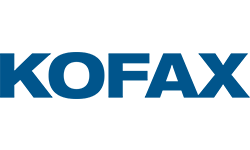Load balancing Kofax Equitrac

Useful resources
About Kofax Equitrac
Kofax Equitrac is a print management solution designed to simplify printer management. Printing costs can be monitored and can be reduced by forcing users to follow budget saving printing habits. Secure and regulations compliant printing is made possible by allowing users ‘pick up’ and print their secure documents in person at any printer. Flexible printing is achieved as users can print from anywhere, at any time, and print from wherever they like.
Kofax ControlSuite integrates print, capture and output management in a single solution and can also benefit from being load balanced, see the ControlSuite Application page for further details.
Key benefits of load balancing
As print and document workflow specialists, Loadbalancer.org understands that these environments can be complex with multiple technologies and applications.
Load balancing Kofax Equitrac creates systems that are:
- reliable and highly available
- scalable
- high-performing
Loadbalancer.org specializes in providing application delivery controllers (ADC) and load balancing solutions to the Print & Workflow Management sector. In addition to load balancing Equitrac, Loadbalancer.org also provides solutions for Kofax’s ControlSuite product line, see the Application page for further details.
How to load balance Kofax Equitrac
For load balancing Kofax Equitrac we recommend Layer 4 Direct Routing (DR) mode, aka Direct Server Return (DSR). However, Layer 4 NAT, Layer 4 SNAT & Layer 7 SNAT can also be used. Deciding which method is best for your deployment depends on a variety of factors. Layer 4 DR mode is the fastest method but requires the ARP problem to be solved and also requires the application running on the real servers to respond to both its own IP address and the VIP. Layer 4 NAT mode requires that the default gateway on the real servers is the load balancer. Layer 4 SNAT mode requires no real server changes, but unlike the other Layer 4 methods, is non-transparent. Layer 7 SNAT mode is also non-transparent and requires no real server changes, but does not offer the raw throughput of the Layer 4 methods.
Layer 4 DR Mode is a very high-performance solution that requires little change to your existing infrastructure. It is necessary to solve the ARP problem on the real print servers. This is a straightforward process and is detailed in the section “Configuring Print Servers for Load Balancing” which can be found in the deployment guide. If you cannot make changes on the print servers, then we would recommend using Layer 7 SNAT Mode. Due to the increased amount of information at Layer 7, performance is not as fast as at Layer 4. Also note that load balanced connections at Layer 7 are not Source IP transparent, which is not usually an issue when load balancing print servers but should still be considered.

guides

Kofax Equitrac Deployment Guide
Read deployment guide
Kofax ControlSuite Deployment Guide
Read deployment guidemanual

Administration manual v8
Read manualblog

Printing without pain: How to scale print environments and avoid downtime
Read blog

